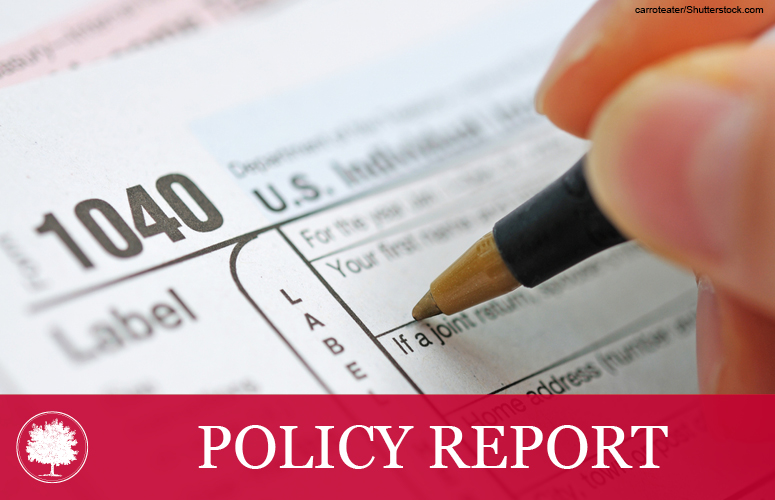Tax Reform Principles for Ohio
Feb 02, 2015
By Rea S. Hederman Jr., Tom Lampman, Greg R. Lawson, and Joe Nichols
Summary
Today, Ohio Governor John Kasich released his new fiscal budget. The Governor and General Assembly continue to reform Ohio’s complicated and harmful tax code. Noteworthy reforms have already been made over the past decade, including lowering the top personal income tax rate, eliminating the death tax, phasing out the tangible personal property tax, and providing significant small business tax relief; but other proposed tax plans would have moved Ohio’s tax code in the wrong direction.
Ohio is not alone in making changes to its tax code. Many states and even other countries have altered their tax systems to encourage entrepreneurship and economic prosperity. If Ohio fails to move in the right direction on tax policy, it will cede ground to the states that have enacted pro-growth reforms and will become less attractive for both business investment and workers. It is crucial that policymakers seek to draft the best tax bill possible. To that end, there are key principles that should guide the efforts of the 131st General Assembly in considering tax reform.
Any good tax bill will be based on the following four principles:
- Pro-growth – A tax system should minimize tax distortions, avoid high rates and discourage tax avoidance. A good tax plan will reduce tax rates on investment and labor, which are key components for economic prosperity and job creation.
- Simplicity – The tax code should be simplified by reducing loop- holes, credits, and deductions. Complying with the tax code should not be burdensome. A simpler tax code makes it easier for both government administration and taxpayer compliance. A more complicated tax code increases the risk of special interest carve-outs and favors.
- Transparency – The tax code should be clear, enabling taxpayers to easily identify which specific taxes they pay. Ohioans should be able to understand debates over changes in tax policy and know how their elected officials are representing their interests.
- Fairness and Equitability – A good tax code promotes equity by ensuring that taxpayers in similar situations are treated similarly, income is not taxed multiple times, and industries are not singled out for preferential tax treatment. Alternatively, industries and individuals should not be punished and subject to punitive tax rates with government picking winners and punishing losers. People and businesses with equivalent earnings should pay similar taxes. Rates should not force individuals and businesses to change filing status for better tax treatment.
Policymakers should determine the efficacy of proposed tax changes. Dynamic modeling analysis offers the best prediction of how the economy in Ohio will respond to tax changes. The federal government is now utilizing dynamic analysis, as do most research economists. Dynamic analysis is an important tool that should be a part of Ohio’s tax reform project.
Ohio’s leaders and citizens must settle on a plan of action to improve our state. Ohio’s position at 49th of the 50 states on the ALEC Economic Performance Index underscores that there is certainly no shortage of opportunities for improvement.[1] The upcoming budget discussion gives Ohio policymakers the chance to enact good tax reform based on the four key principles that will lead to better economic performance.
State policymakers implemented significant tax reform in the mid-2000s and again in a series of bills over the previous two General Assemblies. Those reforms included eliminating the cumbersome tangible personal property tax, phasing in a 21% income tax reduction, reducing the income tax while eliminating the death tax, and embracing an up-to-75% deduction on small business income. Despite these positive efforts, tax policy remains a critical area for additional pro-growth reform in the coming biennium. Ohio retains a burdensome tax code when examined at the state and local level. The structure of Ohio’s tax system is unique in its complex and constrictive nature, and it is from this structure that problems emerge. The tax structure has caused more than half a century of job growth that is below the national average. The good news is that it can be changed.
The need for tax reform is real. The new legislative session and re-election of Governor John Kasich provide a tremendous opportunity to build upon previous successes in tax reform and to craft a better tax policy for Ohio.
Click here to download the full report: Tax Reform Principles for Ohio
1. Laffer, Arthur B., Stephen Moore and Jonathan Williams. “Rich States, Poor States 7th Edition.” American Legislative Exchange Council. April 15, 2014 at http://alec.org/docs/RSPS_7th_Edition.pdf (January 6, 2015).
